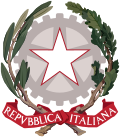The topic of this article may not meet Wikipedia's notability guideline for stand-alone lists .(January 2023) |
The following is a list of international prime ministerial trips made by Prime Ministers of Italy in reverse chronological order.
Contents
- Summary
- Italian Republic (1946–present)
- Giorgia Meloni (2022–present)
- Mario Draghi (2021–2022)
- Giuseppe Conte (2018–2021)
- Paolo Gentiloni (2016–2018)
- Matteo Renzi (2014–2016)
- Enrico Letta (2013–2014)
- Mario Monti (2011–2013)
- Silvio Berlusconi (2008–2011)
- Romano Prodi (2006–2008)
- Silvio Berlusconi (2001–2006)
- Giuliano Amato (2000–2001)
- Massimo D'Alema (1998–2000)
- Romano Prodi (1996–1998)
- Lamberto Dini (1994–1996)
- Silvio Berlusconi (1994–1995)
- Bettino Craxi (1983–1987)
- Kingdom of Italy (1900–1946)
- Benito Mussolini (1922–1943)
- See also
- References
